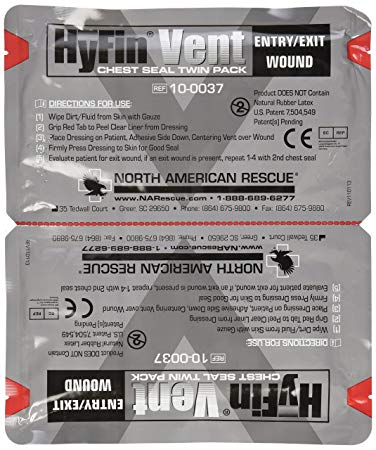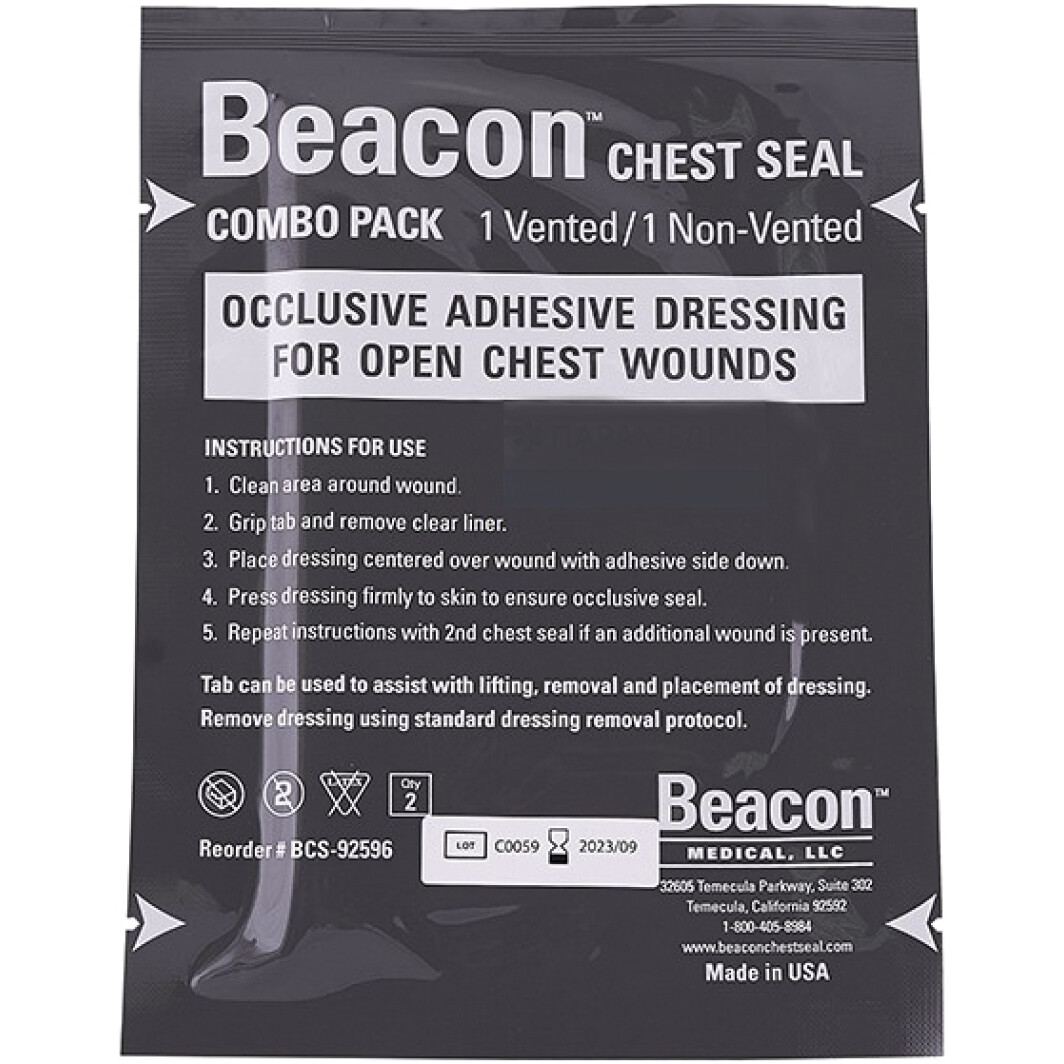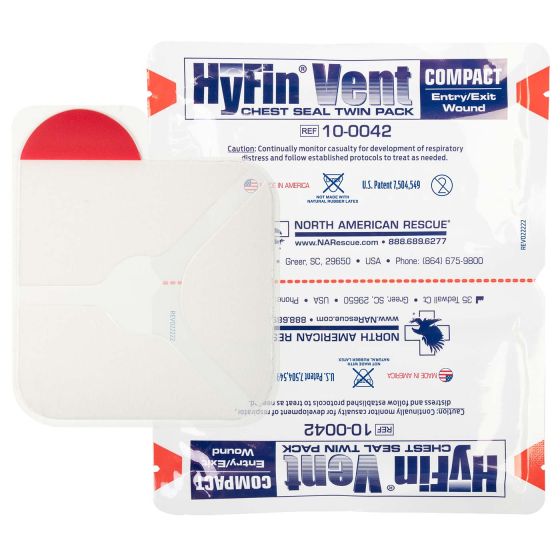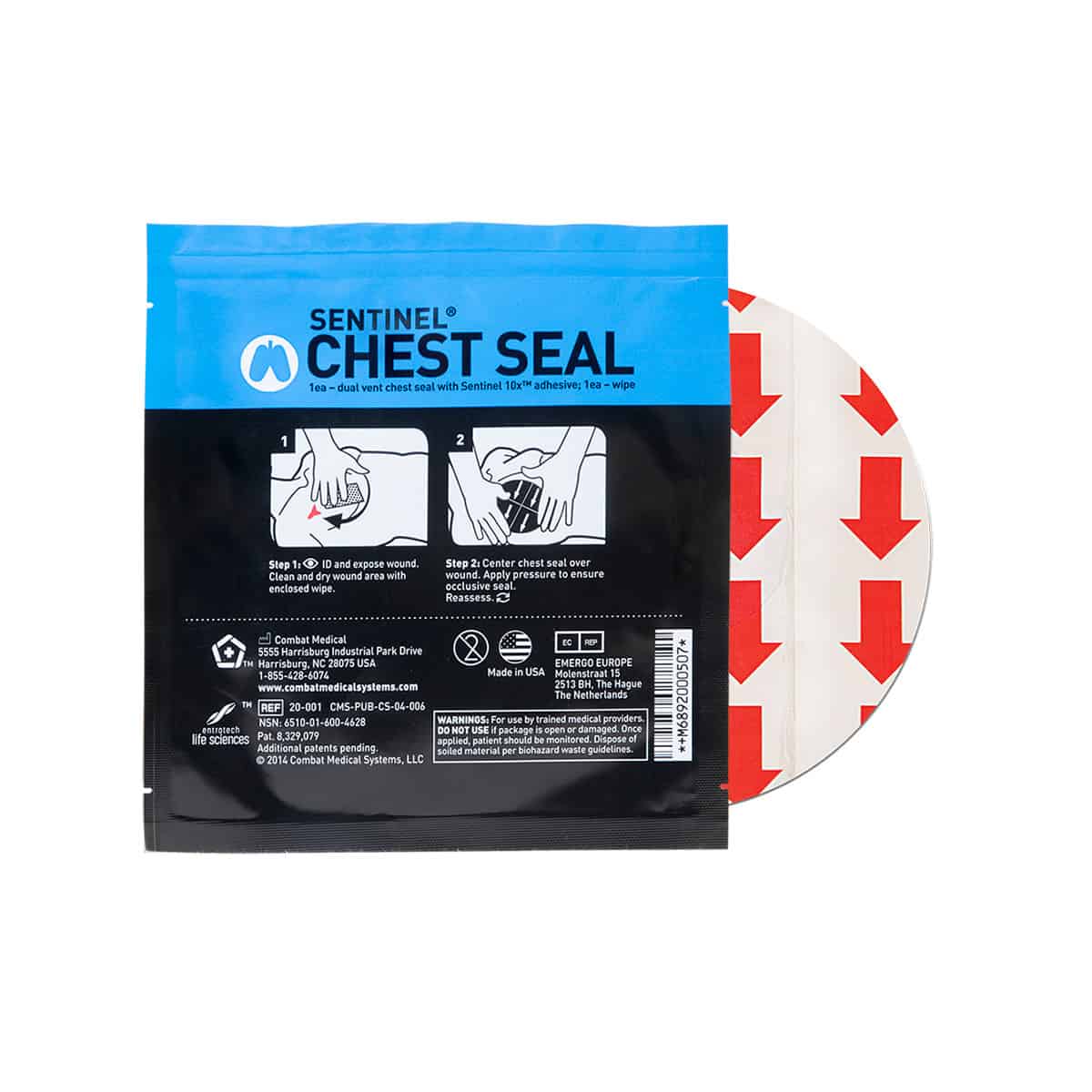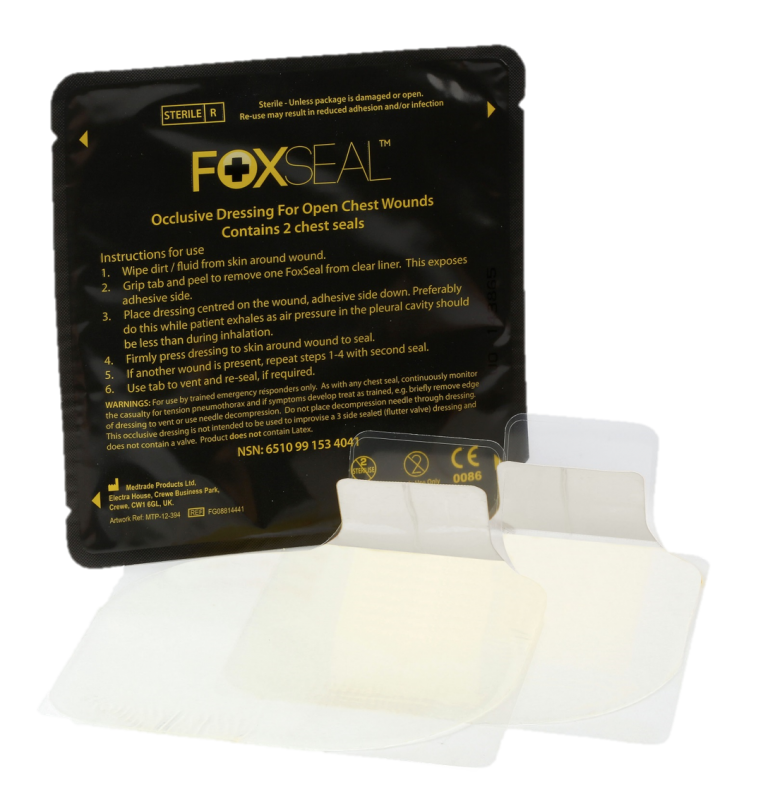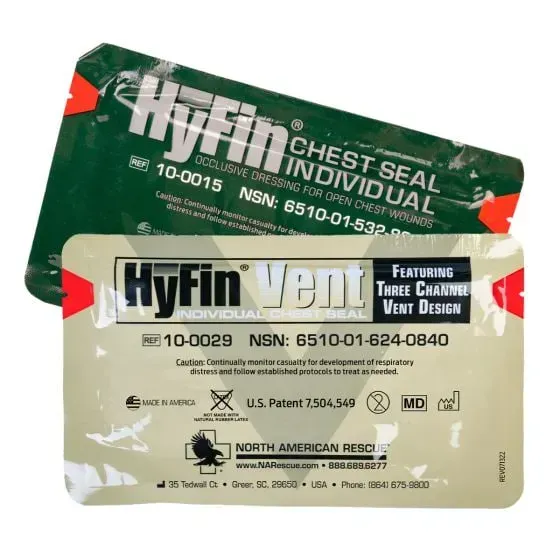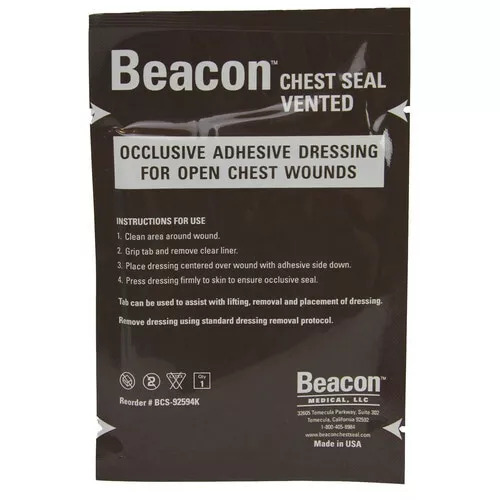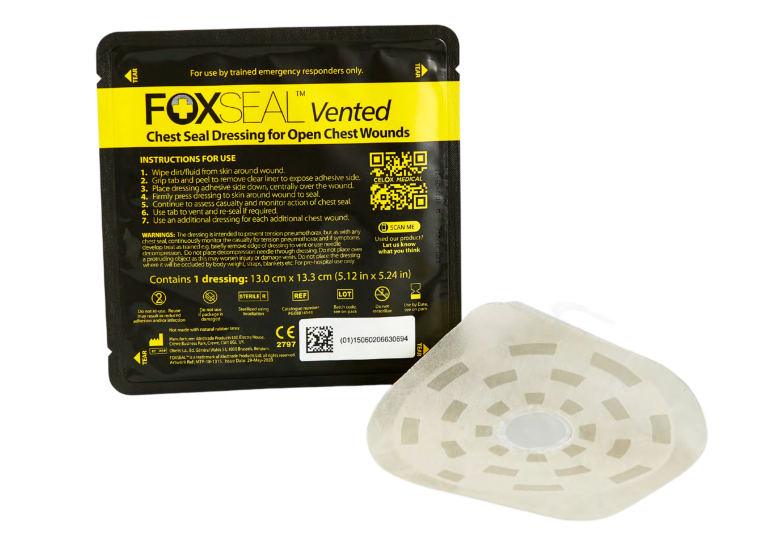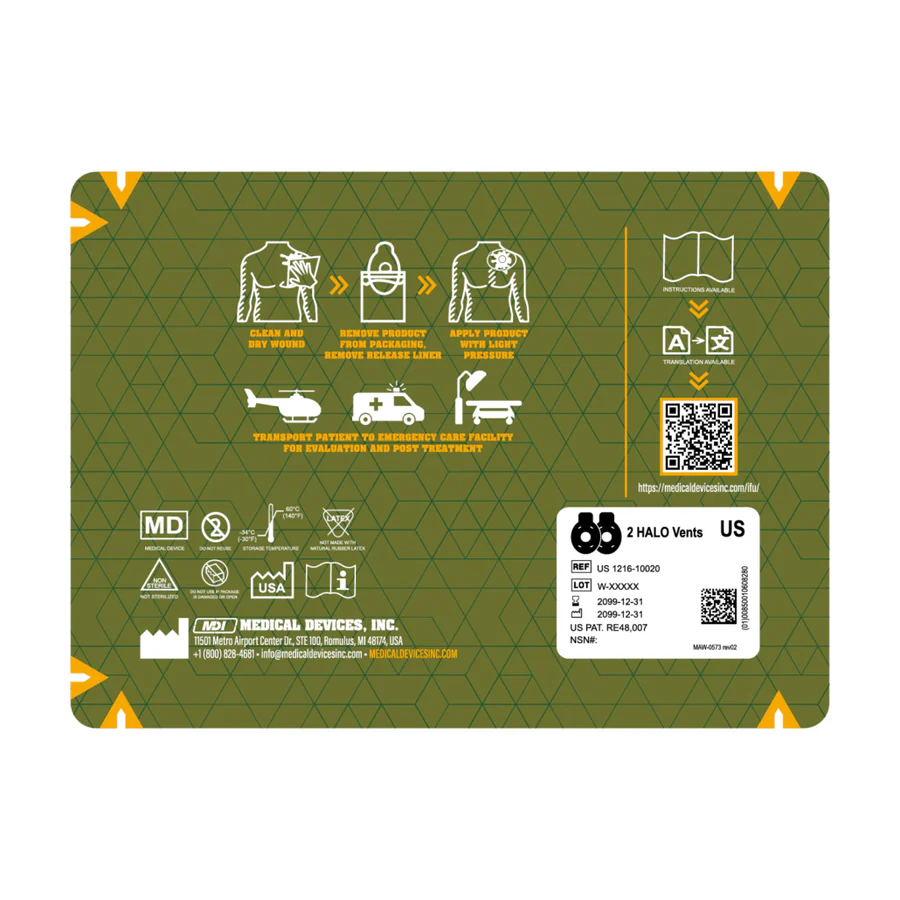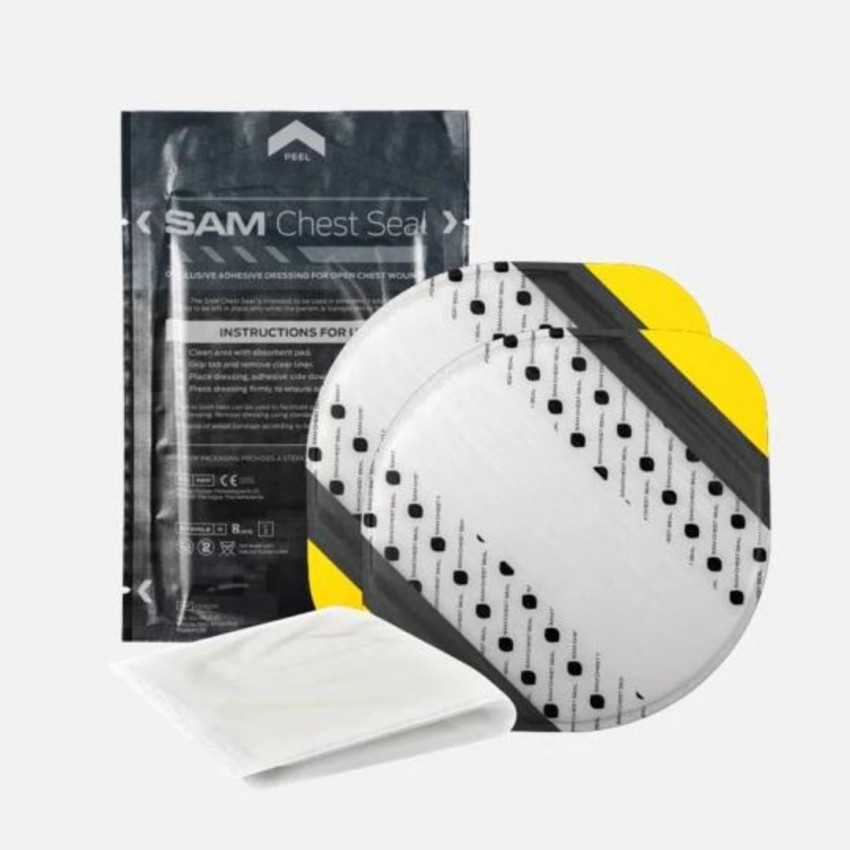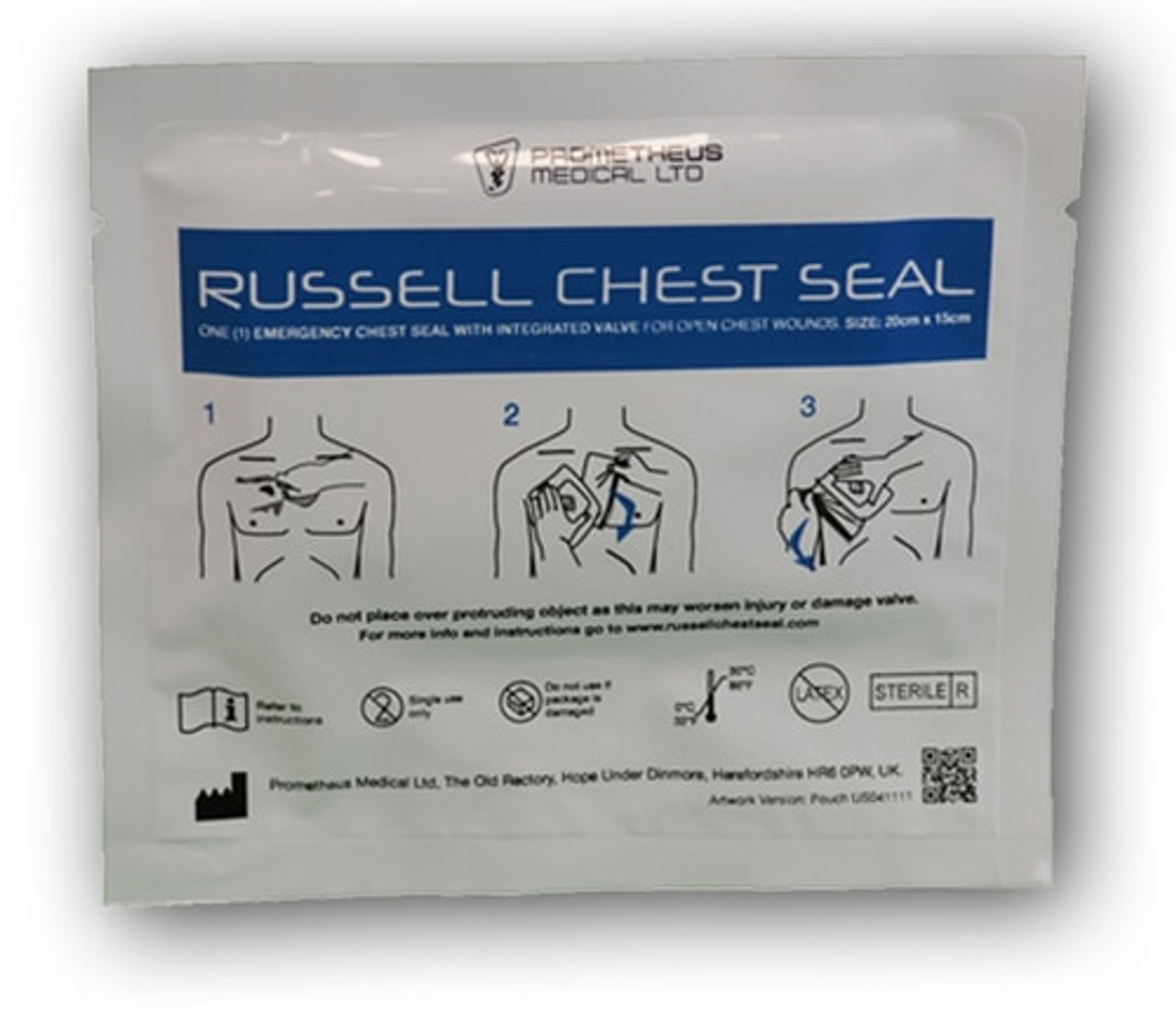Occlusive Chest Seals: How to Choose and Use Them
To provide emergency care for chest injuries, occlusive chest seals are most commonly used. They are essential to keep the affected area airtight and prevent air from entering the pleural cavity. You may also encounter the term “occlusive dressings,” since the seals essentially act as dressings and remain on the patient until full medical assistance is provided.
How to Use Occlusive Chest Seals
Airtight chest seals operate on a fairly simple principle. One side has an adhesive surface that securely attaches around the wound. It creates an airtight layer that prevents air from entering the chest cavity during inhalation. Some models are equipped with special valves that allow trapped air to escape outward. This feature is crucial when treating an open pneumothorax, as it helps reduce pressure in the pleural cavity.
Modern chest seals for pneumothorax can be multifunctional — they not only provide complete airtightness but also allow controlled drainage of air and fluids. This significantly increases the victim’s chances of survival.
Advantages of Using Occlusive Chest Seals
Occlusive seals have several key advantages, one of which is their quick and easy application. Their simple design allows them to be used correctly even in high-stress situations.
They also adhere securely. Thanks to high-quality materials and smart design, the seals stick firmly to the body, even if the skin is dirty or wet. Their compact size makes them easy to store in an individual first aid kit.
Another important advantage is reliable protection against infection, as using occlusive seals significantly reduces the risk of microorganisms entering the wound.
For these and many other reasons, occlusive chest seals have become a standard in tactical medicine and are also widely used in civilian settings.
Types of Chest Seals for Pneumothorax
Although these seals have a simple structure, there are several types available on the market. The most basic option is a one-way valve design. It allows air to escape from the pleural cavity but prevents it from entering again.
To ensure more efficient venting of air and fluids, multi-valve versions can be used. There are also non-valve seals, which are applied when full airtight closure is required. However, they should only be used when the victim is expected to receive definitive medical care soon.
Therefore, the choice of seal depends on the specific situation and the available first aid equipment.
How to Properly Apply Occlusive Dressings
For chest seals to be effective, it’s important to apply them correctly. Before use, try to clean the skin around the wound, as it may be contaminated with blood or dirt. Then, open the package and press the seal firmly over the wound so that it completely covers it.
Make sure the edges of the seal adhere tightly to the skin. If possible, you can secure the edges with additional material.
These steps help buy valuable time before medical personnel arrive and reduce the risk of complications.
Where to Buy Certified Occlusive Chest Seals
You can purchase certified and field-tested occlusive chest seals at TacMed. It’s important to choose certified products, as the quality of the materials and valve system can directly affect a person’s life.
It is recommended to keep these dressings in every first aid kit — home, car, and especially tactical kits. This simple and relatively inexpensive tool can save a life in a critical situation. Occlusive chest seals maintain airtightness, prevent the development of pneumothorax, and help stabilize the victim’s condition until medical help arrives.
Occlusive Chest Seals — Frequently Asked Questions
What is an occlusive chest seal?
An occlusive chest seal is a waterproof dressing used to cover open chest wounds. It temporarily prevents air entering the pleural cavity and helps stabilize a casualty until professional medical care is available.
When should occlusive seals be used?
They are used for penetrating chest injuries or suspected pneumothorax to rapidly seal the wound prior to evacuation or arrival of medical personnel. It is a temporary measure and does not replace definitive medical treatment.
How should occlusive seals be stored?
Keep them in their original, sealed packaging protected from moisture, dirt and direct sunlight; avoid high temperatures, check expiration dates, and keep spare seals in your kit.
